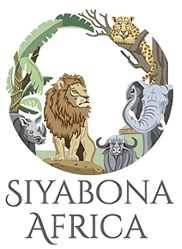
The Caprivi area has an abundance of wildlife and mineral resources. The fact the the strip allows valuable access to the Zambezi river is of interest to the Namibian government. It offers potential trading routes to Africa's East Coast.
Although the geographical and political uncertainy makes the use of this region unlikely. The only promising use for it in the future is eco-tourism.
About Caprivi Strip, Namibia (North)
- Highlights: Okavango River, Kwando River, Zambezi River, Chobe River, Linyanti River, tropical woodlands and swamps, 4 of the Big Five game, National Parks, Popa Falls
- Activities: Game-drives, bird watching, exciting fishing and boating activities
Great Wildlife Viewing
The abundance of water in the Caprivi attracts a large variety of game and bird species. Especially herds of Elephant.
The wildlife is protected by several reserves: Mamili, Bwabwata, Lizauli and Mudumu. There are no fences, therefore the animals roam freely across the borders of Namibia's neighbouring countries, Botswana and Zambia.
The Chobe National Park in Botswana, borders Caprivi to the south, is especially excellent for game viewing.
Without any desert in sight, the Caprivi Strip is nothing like the rest of Namibia. This wetlands paradise is lush and swampy, harnessing the riverine beauty of 5 great rivers and receiving the highest rainfall in the country.
Abundant wildlife roam freely in an unfenced wilderness and it is the only place in Namibia where you can see the Nile crocodile and Hippo. Caprivi land based activities include exciting game drives and walking safaris, while the tranquil waterways are ideal for game viewing by boat, canoeing and tiger fishing. Birdwatchers will have a wonderful time spotting more than 400 species of bird..
The Caprivi Strip is a narrow strip of land wedged between Angola, Botswana, Zambia and Zimbabwe. This Namibia safari destination is simply outstanding when combined with the surrounding attractions of Chobe, Okavango and Victoria Falls which are just a day trip away.
Languages
Local Caprivians, (inhabitants of the Caprivi Strip) speak several African languages: most are languages belonging to the Bantu family. Hukwe is the only Khoisan language spoken along the northeast of the strip.
Many Caprivians also speak some English.

 Caprivi Strip Lodges in Namibia - The Caprivi Strip is located in Namibia and is bordered by the Kwando, Linyanti, Chobe and Zambezi River...
Caprivi Strip Lodges in Namibia - The Caprivi Strip is located in Namibia and is bordered by the Kwando, Linyanti, Chobe and Zambezi River... The Caprivi Strip is an inspiring safari destination in Namibia. Caprivi National Parks on the Kwando, Okavango, Chobe and Zambezi River off...
The Caprivi Strip is an inspiring safari destination in Namibia. Caprivi National Parks on the Kwando, Okavango, Chobe and Zambezi River off...